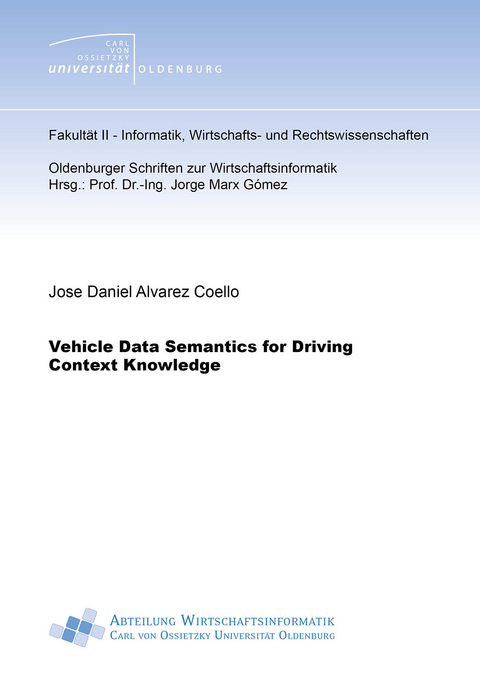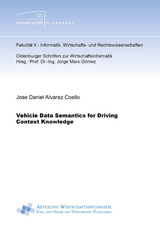Vehicle Data Semantics for Driving Context Knowledge
Seiten
Data is an asset, and its relevance is acknowledged worldwide. Modern vehicles represent a tremendous data source. Despite its value, data must be prepared before it can support decision-making. Data and software architectures in the automotive industry have been traditionally application-centric. This type of architecture causes repeated data engineering processes due to the missing adoption of standards and the lack of semantic data models. Consequently, several isolated data models are developed to serve specific use cases.
There is currently no standard semantic data model to cope with the variety of the vehicle’s dynamic properties and the outcomes obtained by applications that process them. Additionally, such properties produce data streams that impose the so-called one-pass constraint on the architecture. It is then crucial to either process, store, or forward the observed data; otherwise, it is lost forever. Since vehicles have constrained computation, storage, and bandwidth resources, data streams must be handled appropriately to maximize their use.
This thesis studies how to design an artifact that interprets vehicle data streams and represents their meaning in a human-understandable way so that instant, actionable, and reusable facts are obtained in the vehicle architecture. Following the Design Science Research methodology, it proposes an approach for working with vehicle data streams at a higher abstraction layer than raw sensor data. The proposed design consists of a semantic model for vehicle data and its dynamic properties, a stream analysis process for continuous data aggregation, a semantic annotation step for adding explicit context, and a knowledge formalization step in the form of rules for representing the logic behind the desired information.
There is currently no standard semantic data model to cope with the variety of the vehicle’s dynamic properties and the outcomes obtained by applications that process them. Additionally, such properties produce data streams that impose the so-called one-pass constraint on the architecture. It is then crucial to either process, store, or forward the observed data; otherwise, it is lost forever. Since vehicles have constrained computation, storage, and bandwidth resources, data streams must be handled appropriately to maximize their use.
This thesis studies how to design an artifact that interprets vehicle data streams and represents their meaning in a human-understandable way so that instant, actionable, and reusable facts are obtained in the vehicle architecture. Following the Design Science Research methodology, it proposes an approach for working with vehicle data streams at a higher abstraction layer than raw sensor data. The proposed design consists of a semantic model for vehicle data and its dynamic properties, a stream analysis process for continuous data aggregation, a semantic annotation step for adding explicit context, and a knowledge formalization step in the form of rules for representing the logic behind the desired information.
| Erscheinungsdatum | 11.02.2023 |
|---|---|
| Reihe/Serie | Oldenburger Schriften zur Wirtschaftsinformatik ; 34 |
| Verlagsort | Düren |
| Sprache | englisch |
| Maße | 148 x 210 mm |
| Gewicht | 201 g |
| Themenwelt | Mathematik / Informatik ► Informatik |
| Mathematik / Informatik ► Mathematik ► Finanz- / Wirtschaftsmathematik | |
| Schlagworte | Data streams • semantic data • Stream reasoning • vehicle data |
| ISBN-10 | 3-8440-8967-5 / 3844089675 |
| ISBN-13 | 978-3-8440-8967-7 / 9783844089677 |
| Zustand | Neuware |
| Haben Sie eine Frage zum Produkt? |
Mehr entdecken
aus dem Bereich
aus dem Bereich
eine anwendungsorientierte Einführung
Buch | Softcover (2023)
Springer Gabler (Verlag)
CHF 69,95
Buch | Softcover (2023)
De Gruyter Oldenbourg (Verlag)
CHF 41,90




